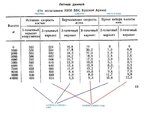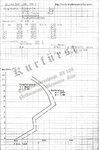CORSNING
Tech Sergeant
How you doing Shortround,
Kick in P-40E vs. P-40N on your computer and you''ll find:
"From a maintenance standpoint, the P-40E was a much better built A/C; the P-40N appeared to be a lightweight, very cheap copy with pretty poor workmanship, poor fittings, clearances an tolerances. The N required more maintenance man hours even though it did not have many of the components of the E. We had to replace the main oil line and build up the wheel spindles. After these problems were corrected, the Ns were fairly easy to maintain".
The N would outperform the E in many respects, rate of climb and turning. It could outturn a Ki.61. The N was a little bit faster.
"The N would have had to rely on mutual support and TURNING TACTICS against the Frank and George. Wow, using it for turning tactics against the Ki.84 and N1K2-J...? It must have been a real turner.
Kick in P-40E vs. P-40N on your computer and you''ll find:
"From a maintenance standpoint, the P-40E was a much better built A/C; the P-40N appeared to be a lightweight, very cheap copy with pretty poor workmanship, poor fittings, clearances an tolerances. The N required more maintenance man hours even though it did not have many of the components of the E. We had to replace the main oil line and build up the wheel spindles. After these problems were corrected, the Ns were fairly easy to maintain".
The N would outperform the E in many respects, rate of climb and turning. It could outturn a Ki.61. The N was a little bit faster.
"The N would have had to rely on mutual support and TURNING TACTICS against the Frank and George. Wow, using it for turning tactics against the Ki.84 and N1K2-J...? It must have been a real turner.


